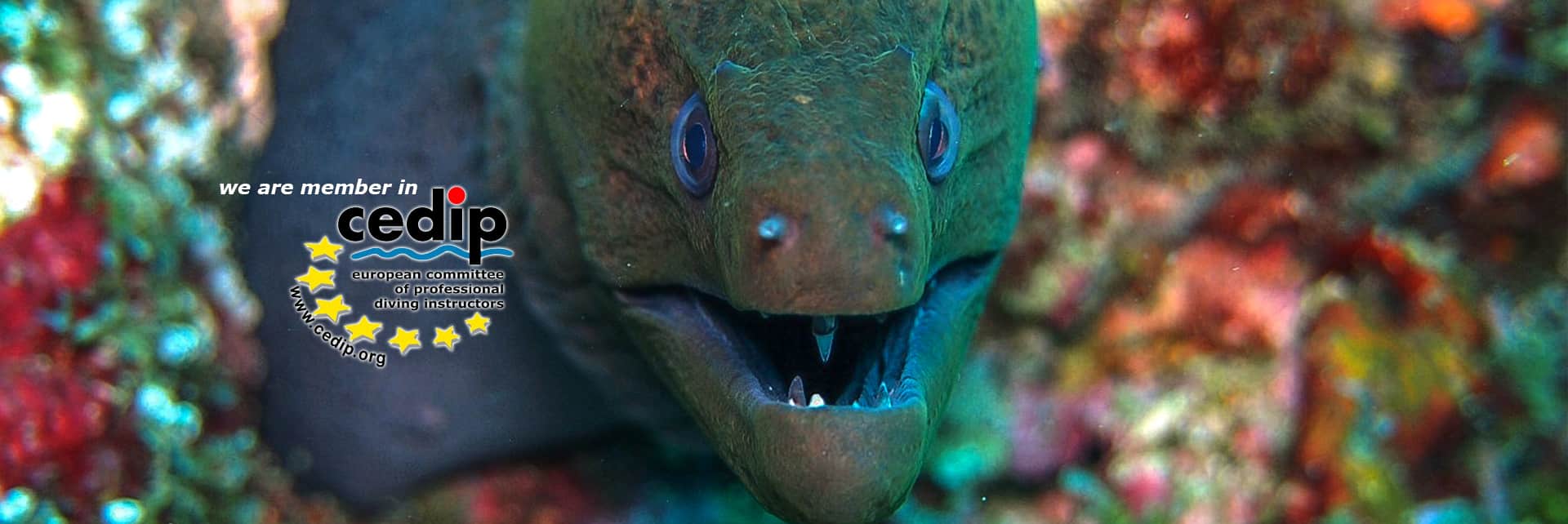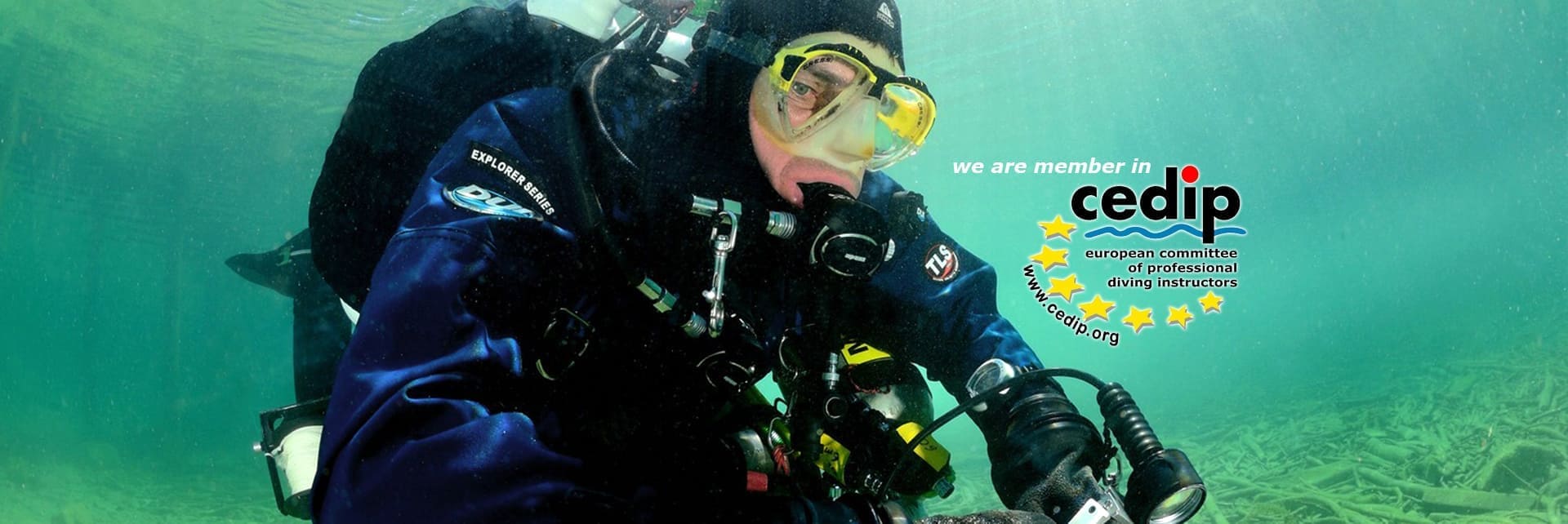special topics
Night Diving – Diving with limited visibility
aim
Diving at night and with poor visibility requires special skills and abilities. This special topic provides the necessary knowledge to be able to dive comfortably and safely at night and with limited visibility.
contents
- Diving with a lamp
- Diving with a lanyard
- Diving with a leader line
- Communication with lamp and line signals
oxygen application
aim
Oxygen administration is entry-level training that teaches divers (and qualified non-divers) how to better recognize potential dive-related injuries and provide emergency oxygen assistance until local emergency services arrive and/or the injured diver can be transported to the nearest medical facility.
contents
- According to DAN guidelines
Altitude Diving – Diving above sea level
aim
In this special topic, the diver is given knowledge about the problems of diving at high altitudes so that he can plan and carry out such dives independently.
contents
- Diving according to mountain lake table
- Calculation of the fictitious diving depth
- Calculation of deco levels
orientation
aim
In this special topic, the diver is given the basic knowledge and the ability to always keep the orientation during dives and to navigate safely using various aids.
contents
- Natural navigation
- compass navigation
- Setting a safety course
- Diving a triangle course
rescue diving
aim
Being well prepared for an emergency can save lives! This special topic imparts the knowledge that decides between life and death in an emergency: recovery and rescue of divers who have had an accident.
contents
- rescuing an unconscious person
- Liberation from encirclement
- First aid
- rescue chain
Deep Diving – Diving over 20m depth
aim
In this special topic for already advanced divers, special medical factors, increasing dangers and special preparation of the equipment for deep dives are conveyed.
contents
- Recognizing and avoiding deep rapture
- Equipment choice for deep dives
- Conducting deco dives
dry diving
aim
Converting to a dry suit (constant volume suit) requires specific knowledge of use, maintenance and care, which is covered in this special topic.
contents
- Functional principle of a dry suit
- Buoyancy control during dry diving
- Dry suit maintenance and care
drift diving
aim
In this special topic, the diver is given the basic knowledge and the ability to recognize the dangers of drift dives and to plan and carry out such dives safely using various tools.
contents
- How are currents created?
- Additional equipment
- Conducting drift dives
search and recovery
aim
In this special topic, the diver is given the basic knowledge and ability to search for objects under water and to recover them using various tools.
contents
- search methods
- Diving for line signals
- Working with a lifting balloon
boat diving
aim
In this special topic, the diver is given the basic knowledge and the ability to recognize the dangers of boat dives and to plan such dives and carry them out safely using various tools.
contents
- behavior while diving
- Behavior in ship traffic
- boating knowledge
wreck diving
aim
In this special topic, the special problems and dangers are explained to the diver in order to complete wreck dives safely and without risk.
contents
- Planning wreck dives
- hazard analysis
- Diving for a leader line
ice diving
aim
In this special topic, the diver is made aware of the special problems and dangers involved in planning and carrying out ice dives safely.
contents
- Planning ice dives
- technical aspects
- medical aspects
- ecological aspects
- Diving for a leader line
scooter diving
Level 1 – “Basic ADV / DPV Diver” for recreational divers
aim
In this special topic, the diver learns the necessary knowledge and skills to safely plan and carry out dives with a scooter. Due to the complexity of technical dives (trimix, full cave, etc.), the training to become a scooter diver, hereinafter referred to as ADV (Advanced Diving Vehicle) or DPV (Diver Propulsion Vehicle) Diver, was divided into 3 levels;
- Level 1 of the “Basic ADV / DPV Diver” for recreational divers
- Level 2 of the “Technical ADV / DPV Diver” for technical divers
- Level 3 of the “Unlimited ADV / DPV Diver” for Advanced Trimix and Full Cave Divers
contents
- History of the Scooter
- types of scooters
- scooter body
- drive
- energy
- Maintenance and Care
- dive planning
- practice
- Position when riding a scooter
- Taring while riding a scooter
- standard manoeuvre
- scooter handling
- etc.
Diving with a full face mask
aim
This course is full face mask diving training. It is designed to help the student develop the skills, knowledge and techniques necessary for full face mask diving to safely dive with a full face mask.
contents
- theory training
- Practical use
- Change to redundant system
- Change from automatic air vent and mask to full mask
- open water dives
Introduction to research diving
aim
Theoretical and practical introduction to methods of scientific diving (variable according to season and local conditions).
contents
- Collection of sediment and water samples and their processing
- plankton fishing
- transects
- line diving
- survey work
- Working with a lifting balloon
- node customer
- Special features of research diving: risk assessment and dive planning
If you have any questions about any of these topics, do not hesitate to contact us. We will gladly answer your questions.










